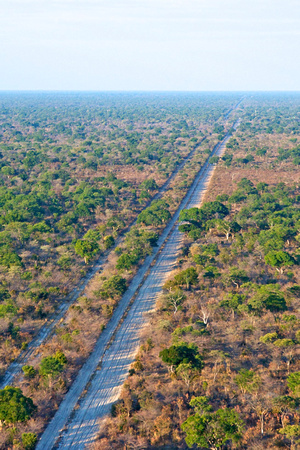Veterinary Cordon Fence 1
Botswana / Namibia Border and Veterinary Cordon Fence (VCF). Known as the Caprivi Fence, this VCF was erected in 1996 by the Botswana government in an attempt to control contagious bovine pleuropneumonia (CBPP) a disease of cattle. A 35 km section of this fence west of the Kwando River was removed in 2001 thereby creating probably the most important animal movement corridor in KAZA and allowing dispersal and migratory movement of wildlife between Botswana and Namibia.
The TFCA concept and current, internationally accepted approaches to the management of transboundary animal diseases (TADs) are largely incompatible. The present approach to the control of important TADs (such as foot and mouth disease, FMD), relies on the use of extensive cordon fences to prevent movement of susceptible animals between areas where the disease occurs and areas where it does not, and to similarly restrict trade in commodities derived from these animals. This approach is incompatible with the vision of vast conservation landscapes, the longterm success of which depends largely upon the unrestricted movement of wildlife.


